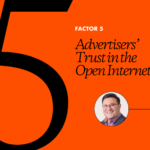A mid-sized digital media outlet dropping its paywall is not usually the stuff of national news. But when Quartz, the digital business outlet, scrapped its paywall earlier this month, the move was promptly written up in the New York Times. What gives?
In fact, just a few weeks later, Quartz announced it had been acquired by G/O Media, whose suite of sites is unpaywalled. It’s possible Quartz was just getting in line with its soon-to-be owner.
The degree of attention paid to Quartz’s decision has something to do with the media environment of the moment. As we’ve written about more than once, digital subscriptions are on the rise across the industry, boosting profits for everyone from the New York Times to local papers in Buffalo and St. Louis.
Still, while subscriptions are generally trending upwards, nothing in the media industry stays static. The fluctuation around paywalls has happened in tandem with another trend: a renewed interest in community on the part of publishers.
All of this movement indicates a paradox in media, and brings up a significant question—does building a community of loyal users happen before, or after, paywalls go up?
The Power Of Community
The focus on community-building makes sense. Even the biggest publishers—outlets that receive tens of millions of visits per day—see only a fraction of the traffic of the big social platforms. On the internet, it seems, there’s no bigger draw than conversation. Give people a place to be heard, to connect with like-minded individuals, and they will repay you with regular visits: this is one of the main lessons of Web 2.0. It’s no surprise that publishers would want to siphon some of that energy for themselves.
For publishers looking to beef up their owned communities, a fully-paywalled site can be a complex proposition.
On the one hand, people who actually pay for a subscription are some of the likeliest to comment anyway. A thriving community can absolutely be built exclusively with paid subscribers.
Substack is a great example of this. Many Substackers only let you comment if you subscribe, and nonetheless host sprawling, engaged comments sections. There is also the fact that only letting paid-up members comment almost guarantees a more civil discourse, as it’s unlikely that a troll would actually pay money to annoy people.
On the other hand, conversation is an incredible tool for growth—and paywalling all your articles can negate that function.
There is no question that it’s your content that matters most when cultivating readers. But it’s an engaged community that creates stickiness. Community keeps readers reliably coming back, day after day. Un-paywalled articles allow first-time or occasional visitors to shake up the conversation, keeping things fresh and luring in still more readers (and participants). This can still be possible with a paywall—some percentage of readers, after all, will opt for a free trial and find the conversation that way—but the process might be slower, and the growth less explosive.
To Paywall, Or Not To Paywall?
Obviously, few sites deploy a paywall for every article (though some do—such as The Washington Post). Most, instead, paywall some content, and open other content to anyone who wants to read it. Countless strategic concerns go into the decision of what to paywall.
What we’d argue—given the importance of community for growth—is that one of those concerns should be: How likely is this article to generate high-quality conversation?
This consideration doesn’t have to be incompatible with a normal paywall strategy. In a normal paywall strategy, the articles that are paywalled are those most likely to drive clicks—juicy scoops or exposes, say, or epic longform features. But the articles most likely to generate clicks are not necessarily the ones that will generate the most conversation. They can be, absolutely. However, the truth is that evergreen, lower-stakes content is just as if not more likely to generate vibrant discussion.
Think, say, a list of the best albums of 1999. Or a quick primer on the best way to cook a steak. Or a write-up of last night’s big prestige-TV finale. Content like that can generate discussion at a surprisingly high volume. It draws in new readers and, in the slightly longer run, subscribers.
All of that said—and despite the Quartz move—there is no real indication that paywalls are on the way out. The beauty of this moment in media is that publishers don’t have to choose. They can grow their audience with paywalls while they can grow their audience with community.


